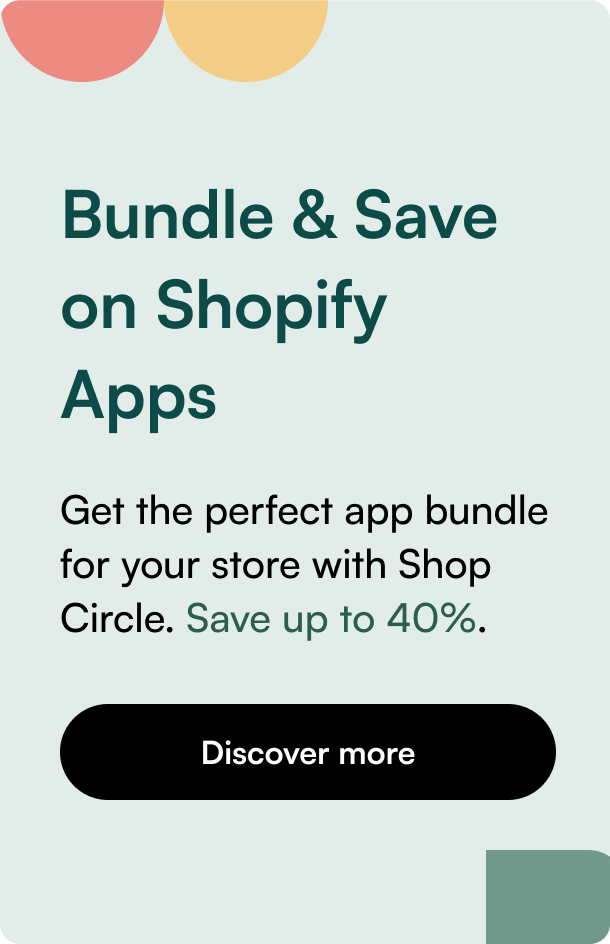Table of Contents
- Introduction
- Benefits of Spreadshirt Shopify Integration
- Setting Up Spreadshirt Shopify Integration – A Technical Roadmap
- Addressing Common Questions and Concerns
- Conclusion
Introduction
Have you ever wondered how you can link the creativity of custom apparel with the robust functionality of Shopify? With the rise of dropshipping and print-on-demand services, Spreadshirt's Shopify integration is becoming an increasingly attractive avenue for entrepreneurs to explore. Whether you are just starting or searching to expand your online business, the fusion of Spreadshirt's print-on-demand services with Shopify’s e-commerce platform can open new avenues of growth. In this blog post, we'll delve into how to leverage Spreadshirt Shopify integration to its fullest potential and examine its unique benefits.
Benefits of Spreadshirt Shopify Integration
Spreadshirt's print-on-demand (POD) model has revolutionized the e-commerce space by allowing businesses to offer custom merchandise without the overhead of inventory. When integrated with Shopify, merchants can access a modern, highly efficient production and fulfillment network while leveraging Shopify’s user-friendly e-commerce tools. Here’s what the integration has to offer:
Streamlined Operations
- Efficient Workflow: Orders from your Shopify store can be automatically routed to the nearest Spreadshirt facility, ensuring fast production and delivery times.
- Economic Efficiency: Enjoy competitive product pricing and low return rates (<0.8%), optimizing profitability.
- Product Synchronization: Avoid the hassle of stockkeeping with automatic stock updates via the integration.
Customer Experience Enhancement
- Fast Shipping: Delivery within 48 hours from Spreadshirt’s facility amps up customer satisfaction scores.
- Product Customizability: Integrate a designer tool onto your Shopify store akin to Spreadshirt, inviting customers to personalize products enhancing their shopping experience.
Expert Support and Flexibility
- Responsive Assistance: Spreadshirt’s support team is attentive to user feedback, ensuring seamless app functionality.
- Inclusive Product Catalogue: While curating products native to Spreadshirt’s platform, businesses can also broaden their catalog with personal creations.
- Beta Feedback: Participating in beta phases of development allows merchants to provide direct feedback and potentially tailor features better suited to their business needs.
Setting Up Spreadshirt Shopify Integration – A Technical Roadmap
Are you ready to incorporate Spreadshirt’s POD services into your Shopify venture? Follow these straightforward steps for a seamless integration:
- Install Application: Obtain the Spreadshirt application, ideally during a beta release for an enriched set of features and discount offerings.
- Design and Selection: Access Spreadshirt’s array of designs, decide on the offerings while ensuring there’s compatibility across different production facilities for a smooth operation.
- Pricing Strategy: Practice autonomy in setting your own prices while staying competitive within the market.
- Branding: Explore product customization, use multiple color palettes, and get creative with your brand to differentiate yourself.
- Integration Essentials: Make sure that product variants, automatic stock updates, and error-handling mechanisms are diligently set up to prevent any operational glitches.
- Continuous Development: Post-setup, proactively participate in feedback loops to finesse the integration according to your business needs and customer preferences.
Addressing Common Questions and Concerns
Entrepreneurs might have several queries when it comes to integrating Spreadshirt with Shopify. Here’s some clarification on frequent points of inquiry:
Design Limitations: Initially, Spreadshirt may offer a limited selection of designs exclusive to their brand ownership, minimizing legal complexities. However, user feedback could potentially expand available offerings.
EU and NA Market Divide: Initially, the integration may focus on one region—but eventually, the goal is to offer a universal app spanning both EU and NA platforms.
Custom Product Addition: While the current integration focuses on typical Spreadshirt offerings, merchants can still individually add custom products to their Shopify storefront for a diversified product range.
Product Migration: Although product migration features from Spreadshirt to Shopify are in the works, an official launch date might not be set yet for this functionality.
Conclusion
Integrating Spreadshirt with Shopify offers a dynamic and profitable approach to e-commerce. By combining Spreadshirt's streamlined print-on-demand capabilities with Shopify's comprehensive online store management tools, entrepreneurs can diversify their product offerings, optimize their workflow, and ultimately, deliver a superior shopping experience. As with any technological alliance, it requires a nuanced understanding of the integration’s capacity, patient fine-tuning based on customer feedback, and an adaptive strategy that keeps pace with both e-commerce and print-on-demand sector trends.
FAQ: Spreadshirt Shopify Integration
Can I customize products beyond Spreadshirt’s stock range on Shopify?
Yes, while the integration initially supports Spreadshirt’s stock products, you can independently add other custom items to your shop.
Will customers be able to customize apparel directly from my Shopify store?
Planned updates include a customization tool similar to Spreadshirt’s for Shopify stores, enhancing interactivity for customers.
How does Spreadshirt handle product and design migration for existing accounts to Shopify?
Currently, a migration feature from Spreadshirt to Shopify isn’t live, but it’s in development with an unspecified release date.
Does Spreadshirt’s Shopify app support both EU and NA markets from launch?
At launch, the app may focus on one market, but aims to develop into a unified solution that intuitively caters to both markets.
Can new clothing designs be suggested for addition to the app?
Absolutely, feedback during beta tests and post-launch is vital. Suggest desired product additions for consideration in future updates.









